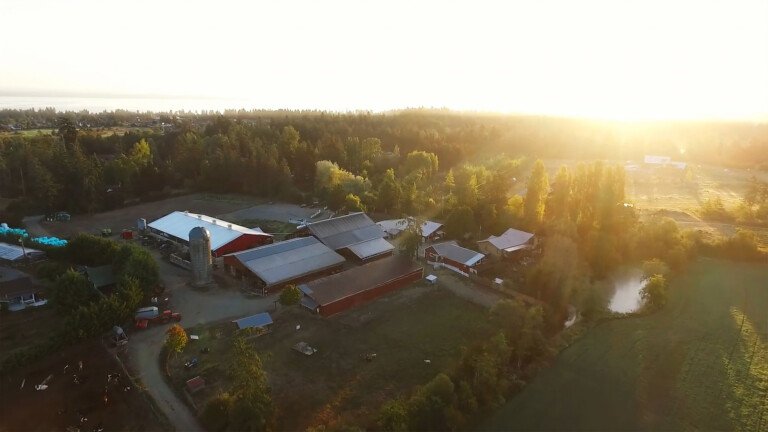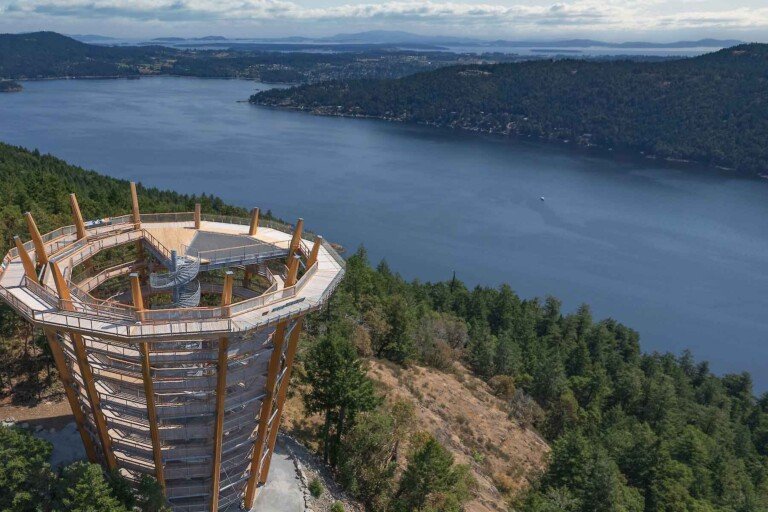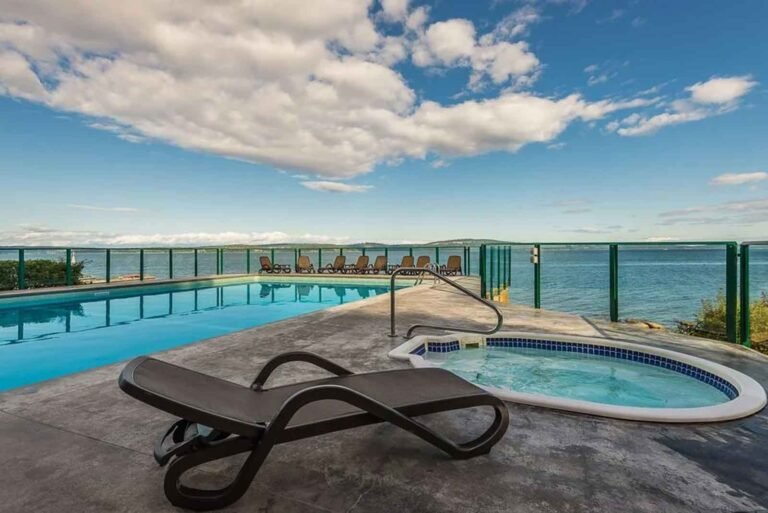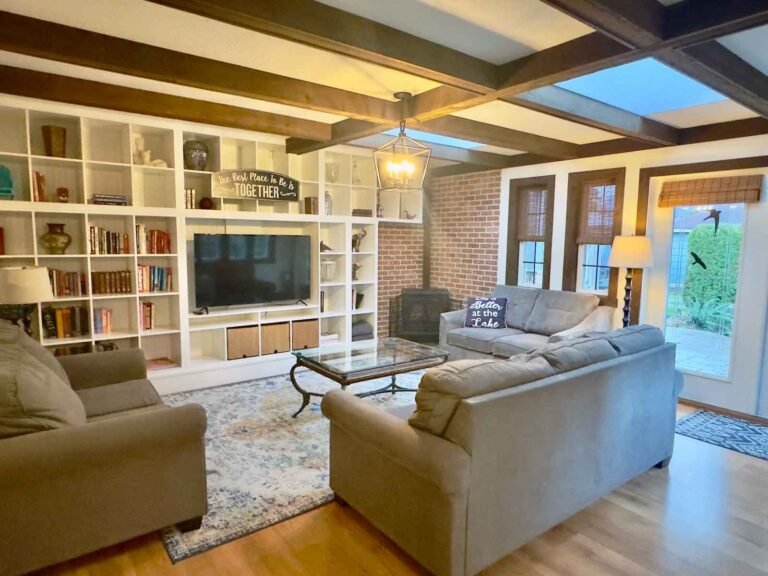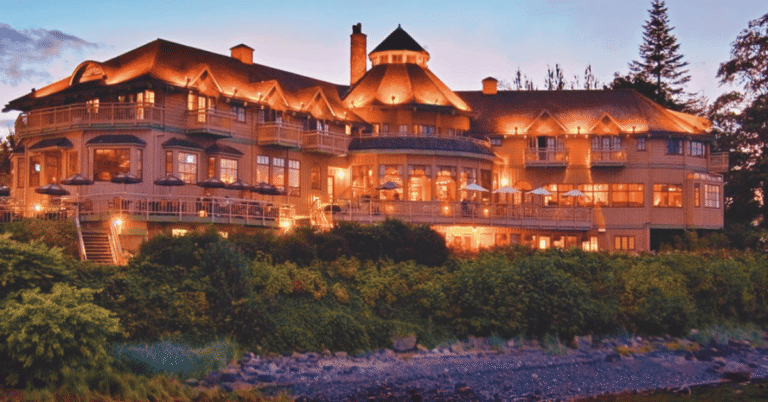Nestled in the fertile Nechako Valley, on the banks of the Nechako River, rural Vanderhoof is the geographical centre of the province of British Columbia.
The Carrier Indians pioneered the land in this area long before the first white man arrived. The area lies within the traditional territories of the Cheslatta’ten and Sai’ Kuz (Stoney Creek) First Nations. An ancient Indian village known as Chinlac lies just a few miles east of Vanderhoof, on the junction of the Nechako and Stuart Rivers. Simon Fraser’s diary relates that he was the first white man to trade with the people of the Chinlac.
After the fur traders came the packers, miners, telegraph operators, surveyors and finally, settlers looking for the free land of the frontier. In 1906, the Village of Vanderhoof was only a survey line in the wilderness to mark the location of the marked railway. When the last spike was driven on 7th April, 1914, it started a race for the land. The Grand Trunk Pacific Development Company offered cheap land and had one of their employees, Mr. Herbert Vanderhoof, lay out the townsite. Vanderhoof is Dutch for “of the farm”, which was very appropriate, since it was the first agricultural settlement in the province. The town grew, and in 1926, the Village of Vanderhoof was born.
With the arrival of World War ll, many young men left, and Vanderhoof came to a standstill. But with the rise in lumber prices, and the arrival of new people in the late 1940s, it started to grow again. The next boost to the population and the economy came with the construction of Kenney Dam in the early 1950s. At the peak of its construction it employed 1,500 men, and a number of them stayed in the area after the dam was built. The next expansion period came with a large influx of American immigrants in the 1960s, and since that time, Vanderhoof has enjoyed steady growth.
There is no opera house here, but plenty of ranching and logging history and lore to be explored at the Heritage Village Museum. Both the ranching and logging industries helped open up the surrounding wilderness for anglers, canoeists, cross-country skiers and wildlife photographers. Vanderhoof is a real live working town typical of the economic life of the north. The town is a central service area for a population of 22,000, with forestry and agriculture – including buffalo and ostrich farms – being the mainstays of the local economy.
Northern British Columbia enthralls visitors with its beauty, hospitality and vast open wilderness spaces accommodating a diverse range of winter and summer outdoor recreation.
Population: 4,799
Location: Vanderhoof is located on the Yellowhead Highway 16, 24 miles (39 km) east of Fort Fraser, 38 miles (60 km) south of Fort St. James, and 63 miles (100 km) west of Prince George.
Learn the history of the region at the Vanderhoof Heritage Museum on the corner of Pine Street and Highway 16. Tour the 11 beautifully restored 1920s period buildings, which include Murray House (the first jail), the old Royal Bank of Canada, the OK Hotel & Cafe, and the Reimer/Redmond House, which depicts the influence of the early Mennonite settlers in the Vanderhoof area. The wonderful heritage Board of Trade Building (built in 1914) was the first building to be moved and restored for the Vanderhoof Heritage Museum (1978), and today houses the museum’s main collection that provides a broad outline of the history of Vanderhoof.
Walking Tour: Visitors can take a leisurely walking tour through the Vanderhoof Town Square and the wagon trails using the self-conducted tour brochure, or have a friendly tour guide accompany you through the restored buildings. Experience the good old fashioned home cooking in the OK Cafe.
The Stoney Creek First Nations village, south of Vanderhoof on the Kenney Dam Road, dates back to the 1890s, with the heritage of the Saik’uz First Nation people being evident in their handicrafts and the magical stories their elders tell. Located in the village is the small Sai’kuz Park overlooking the high banks of Stoney Creek and boasting two impressive Totem Poles.
Chinlac Massacre Site: Nestled at the confluence of the Nechako and Stuart Rivers is the site of the 1745 Chinlac village. In 1745, the southern Denes attacked and nearly annihilated the entire Chinlac population because of their dislike of the Chinlac Chief Khadintel. This site has been under archaeological study for the past several years. Large land depressions mark the spot where houses once stood, and there are hundreds of food caches to be found. Accessible by boat or trail, the site will awaken the historian in everyone. Please consult with the Saik’uz First Nation, the Nak’azdli First Nation or the Vanderhoof Chamber of Commerce before attempting to visit the site.
Nature lovers should visit the Vanderhoof Bird Sanctuary, along the Pacific Flyway, considered a mecca for bird watchers. Tens of thousands of Canada Geese stop to rest and feed on the small islands of the Nechako River during the spring and fall migrations. They’re often joined by migratory hawks and owls that also travel the Flyway.
Beaumont Provincial Park provides campers with open views of Fraser Lake and a breeze that keeps the mosquitoes away. Vehicle and tent campsites are available just off Highway 16 near the community of Fraser Lake to the west of Vanderhoof. Beaumont was the site of the historic Fort Fraser in the 1840s, and there are still a few signs of the habitation around the park.
Stellako River Wildlife Management Area protects 503 hectares of river and riparian habitat along the Stellako River near Fraser Lake. The Stellako River is one of the top rainbow trout river fisheries in BC, and is also used by chinook and sockeye salmon. The area is a destination for sport fishing and other recreational opportunities.
Camping: There are 3 seasonal campgrounds/RV parks in Vanderhoof and a number of camping and RV sites in the surrounding area. Vanderhoof Forest District provides forestry campsites in the area. While not all of them offer sophisticated amenities, such as power hookups or piped water, they do include basic sanitary facilities, fire rings, picnic tables and, where appropriate, boat launch ramps.
Hiking: During the Klondike gold rush in the late 1890s, a telegraph line was constructed to connect the gold fields to the rest of civilization. The telegraph fell out of use in the 1930s with the advent of radio technology. Some parts of the old trail still survive; the longest of these connects Telegraph Creek to Atlin. A section of the Telegraph Trail runs from Hogsback Lake, south of Vanderhoof, for about 10 km until it is lost under Blackwater Road. Other trails in the area include the Home Lake Trail. You can hike to the lake and back in a day but, as the Forest Service has been kind enough to build a cabin at the lake for you to use, why not stay the night? The trailhead is located at km 42.5 on the Kluskus Forest Service Road. About 10 kms beyond is the Johnson Lake Trail, about 5 km one way. There’s no cabin here, but it’s a pretty spot to pitch a tent and enjoy swatting the mosquitoes as the sun sets. A short distance beyond that on the Kluskus Forest Service Road is the Gluten Lake Trail, which leads 6 km east to Gluten Lake, past Zippermouth Lake. Maps are available at the Visitor Centre.
Paddling: Paddlers can challenge the Stellako River and the Nechako River, both suitable for novice and experienced canoeists. Located near the edge of the Lakes District, which comprises over 300 lakes, canoeing is very popular in this area, and you are seldom far from a place to paddle.
Lakes and Rivers: Numerous lakes and rivers in the area provide excellent fishing, canoeing, boating and waterskiing. Immediately south of Vanderhoof are Tachick, Nulki and Sinkut Lakes, and major rivers include the Nechako that runs past Vanderhoof, and Stuart River toward Fort St. James. The region contains the headwaters of the Fraser, Stikine and Mackenzie River systems.
Golf: Golfers can tee off at the par 72, 18-hole Omineca Golf Course.
Golf Vacations in British Columbia.
Murray Ridge Ski Hill, 45 miles (72 km) north of Vanderhoof offers downhill skiing and snowboarding, while hockey, curling, figure skating and ringette tournaments are held throughout winter in Vanderhoof. Murray Ridge Ski Hill contains 20 miles of runs, accessible by a T-bar lift, and well groomed cross-country ski trails.
Skiing & Winter Activities in the North West.
Cross-country skiing: Lakes and rivers freeze during winter in this region, creating level playgrounds for snowmobilers and cross-country skiers. The Nechako Valley Sporting Association maintains some of the numerous trails in the area, including 30 km of groomed trails at Waterlily Lake, located north of town off Highway 16 on Sturgeon Point Road. These same trails are open to mountain bikers in the summer.
Don’t miss the Nechako Valley Exhibition and Fall Fair on the third weekend in August, hosted by the Nechako Valley Exhibition Society. The event combines all facets of the local agricultural community, from animals to home-baked goods. Spend the weekend wandering around the endless booths filled with creative crafts and treats or watching one of the numerous demonstrations.
North of Vanderhoof is the impressive little town of Fort St. James (38 miles/60 km). The beautifully restored fort, and the area’s natural attractions, make the side trip worthwhile. Together with Fort St. James and Fraser Lake, 60 km to the west of Vanderhoof, the community of Vanderhoof is part of what is known locally as the Tri-cities of the Stuart Nechako.
Fort St. James is located off the Yellowhead Highway 16. The Yellowhead Highway Corridor stretches 3,500 km across Western Canada, along the Trans Canada Yellowhead Highway 16 from Winnipeg, Manitoba (Eastern Mile 0) west to Masset on the Queen Charlotte Islands (Western Mile 0) and south on Yellowhead Highway 5 to Hope, British Columbia.
Circle Tours: See the best of Northern BC on one of the Circle Tours that capture the wonders of the north. The Circle Tour of Northern British Columbia incorporates the Alaska Highway through the Rocky Mountain foothills to Watson Lake in the Yukon, linking with the Stewart/Cassiar Highway and Yellowhead Highway 16 in the south. The Inside Passage Circle Tour and the Native Heritage Circle Tour follow the same route, from Port Hardy on Vancouver Island north by ferry to Prince Rupert. Catch another ferry to the Queen Charlotte Islands, or venture east on the Yellowhead Highway to Prince George, and south through the peaceful Cariboo to Vancouver along the historic Cariboo Wagon Road.
Circle Tours in British Columbia.


